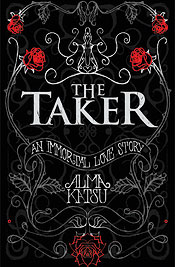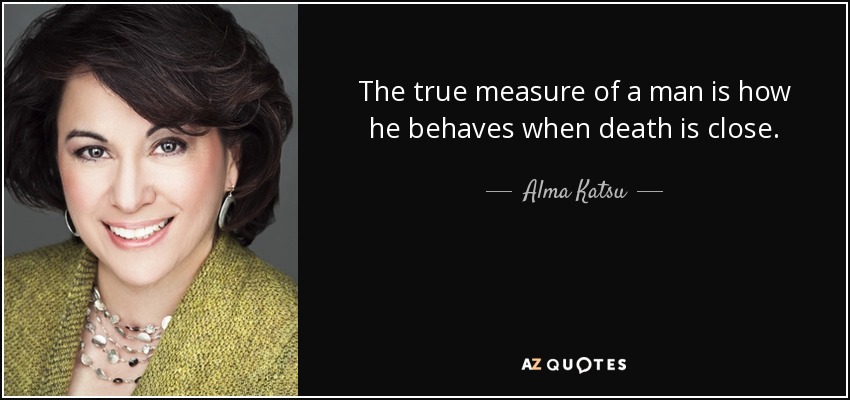Spoilers…
I recently read the first book of The Taker by Alma Katsu and I found my masochistic tendencies running away with me. Despite my horror at the story which unfolded, my distaste for (what felt like) unnecessary violence, and my severe anathema towards weak-willed, obstinate heroines, I was so deeply moved and entrenched that I found my fingers curled white and rigid across the pages, unable to let go. Frequently between pages one and 436 I discovered the unbidden tear attempting to breach my eyes and display my feeling for the story and I was forced to prevent myself from flinging the prettily designed creature at a wall in my temper. Yet regardless of all of this discomfort, regardless of what felt like a torture of pages, I continued reading. Because for all the pain wrought in me by this strangely eloquent novel, the pleasure it evoked was made that much more satisfying. The deeper the bruising, the more stringent the punishment, the more sublime the ecstasy becomes.

Now I would love to put it down to a natural human instinct to revel in the torment of others (fictional characters being easier of course) or the instinct that most people feel to stare for painstaking minutes on end at car accidents as they are passed on the roads. But this experience I put down to an appreciation of the author’s ability to create characters so inherently complex that one becomes confused on a fundamental moral level as to where the antagonist fits into the entire plot. Now perhaps it is just me (though I am disinclined to agree with this hasty assumption) but the clear antagonist of the tale, the obvious “bad guy” as it were, the gentleman proudly walking through page after page sporting his massive black top-hat, was my personal favoured character by page 250, and had my deepest sympathies and affection as his part in the story drew to a close and our beloved heroine, Lanny, bricked him up in a wall in favour of a man who would never truly love her. Despite his glaring inadequacies as a trustworthy individual (okay, perhaps I am downplaying the sheer wickedness of the character to an extent), Adair expressed love toward Lanore. A possessive love certainly. Perhaps some might even call it a display of ownership rather than love itself. But really, isn’t that what most people in love feel?
The title of the novel revolves around the notion that all lovers fall into two categories – Givers and Takers:
“And it´s so different for a lot of people I´ve known. One partner doesn´t love the other enough to stop drinking, or gambling, or running around with other women. One is the giver and one is the taker. The giver wishes the taker would stop.”
“But the taker never changes,” Luke says, though he wonders if this is always the case.
“Sometimes the giver has to let go, but sometimes you don´t. You can´t. I couldn´t give up on Jonathan. I seemed to be able to forgive him anything.”
― Alma Katsu, The Taker
The story unfolds as Lanore McIlvrae nurses a deep, unwavering love for her childhood friend, Jonathan St. Andrew. But any relationship between them is doomed due to social status discrepancies. Lanny is the daughter of a poor man next to the wealth and prestige of Jonathan’s family. Through a series of painful sub-plots, Lanore is forced to watch the man she has sworn herself to (and sworn belongs to her, claiming she will marry him) screw his way through the entire town of women. When he eventually allows her close to him and the metaphysical climax between the two is reached, Lanore falls pregnant; an unfortunate young girl with no luck on her side. Naturally, Jonathan, being a selfish sort of character despite his bright personality – like sunshine on one’s skin – informs Lanny that he will not marry her. He cannot marry her. She is beneath his station. His father would never allow it. He has already been promised to another. It seems there is no end to the excuses that roll out of this boy’s mouth.
Lanore is forced to tell her family who send her away to Boston to have the baby, away from the prying eyes of those that will spread gossip and rumours about her misfortune; effectively ruining her for any chance of marriage in future. The tale would be too simple and plain if our dear heroine were to safely follow her father’s instructions, have the baby, and travel home, back to her Jonathan. No, she decides to attempt to make it on her own, and is picked up a troupe of strange Europeans, including one Count Adair cel Rau.
Adair proceeds to get sweet, unbridled Lanore involved in a number of heinous acts: rape, kidnapping, as well as physical, emotional and sexual torture. And finally, he makes her immortal, bound to him as his own creation and kept lover forever. It somehow does not seem possible then that this man, this evil monster who snatches beautiful things off the streets of wherever he finds himself at the time, and uses them for his own pleasure with hardly a thought for theirs, can be seen as the lesser evil next to sunny, dispassionate, yet somehow ruthlessly self-involved Jonathan. But it is so. I have found it so.

And so I must applaud Alma Katsu on a novel so intricate that I find myself once more (for the first time since the days of early Anne Rice vampire chronicles) captivated and romanced by a fictional man that, for the most part, is little more than a villain parading himself about in a terribly unconvincing sheep costume.
The novel perplexed me and enthralled me. What I have written here is but a small chiselling of my own into what this novel means on a deeper scale, in the very marrow of our bones where we attempt to break apart our own psyche like a puzzle, trying to formulate a pattern where a myriad of differing options seem apparent.
A beautiful accomplishment and a vivid display of the power a Master can exert over his/her pet. Whether one chooses to see Adair as or Jonathan as the Master, however, is entirely a matter of conjecture.

